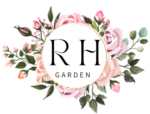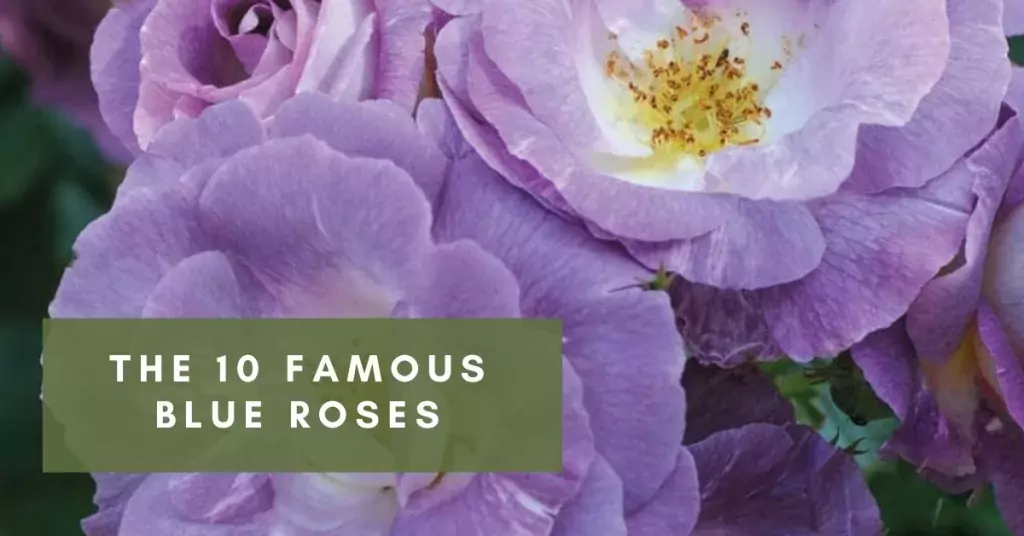Blue roses have long been a symbol of mystery and the unattainable. While true blue roses remain elusive in nature, hybridizers have come remarkably close to achieving this dream. Here are the 10 most famous blue roses:
1. Blue Moon Rose:
Blue Moon Rose is a hybrid tea rose known for its exquisite silvery-lavender-blue blooms. These large, fragrant flowers have a classic rose shape and appear in flushes throughout the growing season. Blue Moon or Mainzer Fastnacht, under different names, is perhaps one of the most famous and widely cultivated lilac roses. Many would consider it the best. Its flowers slowly unfurl from large, elegant buds and remain beautiful even when fully open. They typically appear one by one on long, sturdy stems, making them excellent for cutting, and they last a long time in water. The plant is strong and healthy. It looks great when grown in large clusters, but pairing with other plants in mixed borders can be challenging. While the variety is cold-hardy, it thrives best in hot climates.
Characteristics blue roses
This upright, vigorous shrub reaches a height of about 75 cm. The flowers are large, silvery-lilac, or lilac-purple on long stems. In the sun, the color tends to be more blue, while in the shade, it takes on a pinkish hue. It may be susceptible to black spots. It prefers light, partial shade.
This rose features tall, elegant buds in shades of violet-lilac, with pale lilac blooms and a strong fragrance. The variety is known for its adaptability and is widely distributed, holding an ADR certificate, although it can suffer from powdery mildew in damp summers. Number of flowers per stem: 1, Scent: Strong, Flower size: 10-11 cm, Height: 70-100 cm, Width: 75 cm.
Blue Moon Rose was first introduced in 1964 by the German rose breeder Mathias Tantau. It was one of the earliest attempts to create a blue-toned rose, although the color leans more towards lavender.
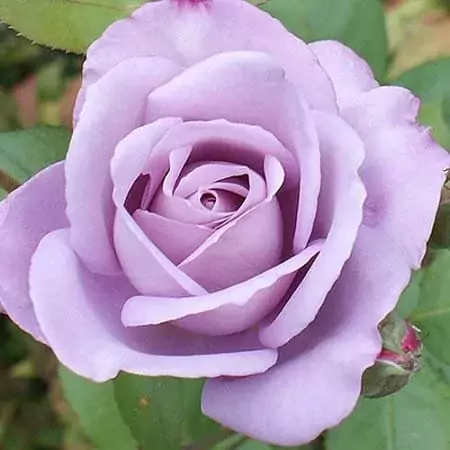
2. Blue Girl Rose:
Blue Girl Rose is another hybrid tea rose with striking blue-ish lavender blooms. It features large, double flowers with a sweet, fruity fragrance and dark green foliage. Flowers of a lavender hue with a mild fragrance, large (about 11-12 cm), double (26-40 petals), usually appear one by one. The bush is dense, branching, 60-70 cm in height and 60 cm in width. The foliage is large, dark green, slightly glossy. Resistant to diseases. Color: Lavender, Number of flowers per stem: 1, Scent: Weak, Flower size: 10-12 cm, Height: 60-70 cm, Width: 60 cm.
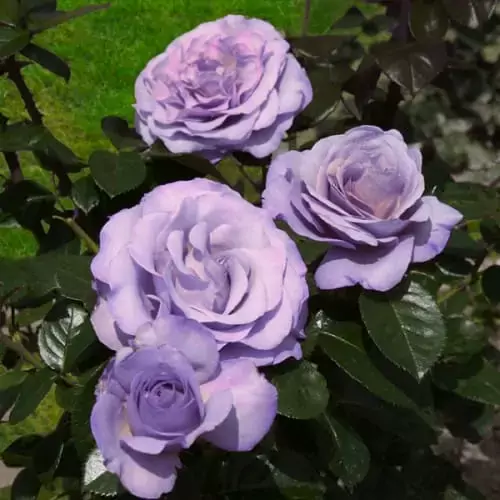
This rose was bred by – Sauvageot, France, in 2008. Like Blue Moon, its color is closer to lavender, but it was one of the first steps towards achieving blue in roses.
3. Blue Nile Rose:
Blue Nile Rose, an English shrub rose, boasts deep mauve-blue petals. Its cupped, semi-double blooms emit a strong, fruity fragrance and contrast beautifully with its healthy dark green leaves. Blue Nile is a tea-hybrid rose with large flowers. Its petals are tinted in bluish-lavender shades. Blue roses do not naturally exist in nature, but breeders have isolated a specific color group known as blue roses. Blue Nile belongs to this category.
Awards:
Throughout its existence, this rose has garnered numerous awards. In 1981, it was awarded the Bagatelle Gold Medal in Paris. This award is given to new rose varieties presented at the annual international competition at Château de Bagatelle (France, Paris).
In 2000, Blue Nile received the Court of Show/Honor prize at the National Rose Show in Florida, USA. In 2001, it became the King of the rose growers’ exhibition in San Mateo.
The combination of citrus, fruity, and tea notes creates an incredible fragrance for this variety, and it has received awards for its scent.

The fully double flowers of Blue Nile have a beautiful, elegant form. They are successfully grown by horticulturists not only as garden roses but also as a worthy variety for cut flower production.
The bushes of this rose are upright and prickly, with dark green foliage. They often reach a height of around 150 cm and a width of about 70 cm. However, it’s worth noting that the shape of this bush depends on the length of pruning and the region in which it grows. For example, in more northern regions, pruning is done at a height of about 75 cm, while in warmer areas, the bushes of this variety are maintained at a height of about 150 cm.
This variety was developed in 1981 in France and registered in the same year in the United States. The author of this rose is G. Delbard.
4. Ebb Tide Rose:
Ebb Tide Rose, classified as a floribunda, exhibits rich, deep purple-blue blossoms. These fragrant, double blooms are uniquely antique, reminiscent of old-fashioned roses. A variety of incredible coloring with a highly intense aroma – such a rose is sure to catch your attention! Smoky-purple buds unfurl into fully double, plum-colored flowers with a smoky overlay in an old-fashioned style. The intense clove fragrance is almost intoxicating. The bush is of medium height, bushy, and upright. This variety needs some time before it comes into its own and showcases its full splendor. Color: smoky-purple, violet Number of flowers on a stem: 1-3 Fragrance: strong Flower size: 9-12 cm Height: 70-90 cm Width: 60 cm USDA: Zone 6

Introduced in 2001 by Tom Carruth, this rose showcases the quest to develop roses with complex, bluish tones.
5. Rhapsody in Blue Rose:

Rhapsody in Blue Rose is a floribunda with velvety, dark purple-blue petals. It features clusters of semi-double to double blooms with a sweet and spicy scent. A variety of extraordinary colors, one of the closest to blue among roses to date. Suitable for flowerbeds and planting as a single bush.
The flowers are purple-violet with a white center and golden stamens, semi-double, in clusters, and as they age, they fade to a soft gray-lavender hue. The bush is upright, up to 120 cm in height, and densely foliaged. Color: purple-violet Number of flowers on a stem: 3-5 , Flower size: 5-6 cm Height: 70-120 cm Width: 60 cm USDA: Zone 6.
Introduced in the United Kingdom by Warner’s Roses in 2000 as ‘Rhapsody in Blue’.
6. Blue for You Rose:
Blue for You Rose is a compact floribunda that displays soft lavender-blue flowers with a silver reverse. It produces clusters of semi-double, mildly fragrant blooms. ‘Blue For You’ was bred by amateur rose breeder Peter J. James in the United Kingdom in 2001 and was introduced in 2007. In France, it was named ‘Pacific Blue’. The rose attracted much interest because blue is a sought-after color in horticulture.
Characteristics:
This free-flowering rose features medium-sized, semi-double flowers that begin showing rich purple mauve, fading to a slate blue, with a white centre and silver reverse. The long buds open to reveal golden stamens and a sweet fragrance. A modern Floribunda blooms over a long period and produces clusters of flowers on a very healthy, bushy plant growing to 90cm tall with lush, glossy foliage.
It can be used for garden beds, borders, hedges and is suitable for growing in pots.
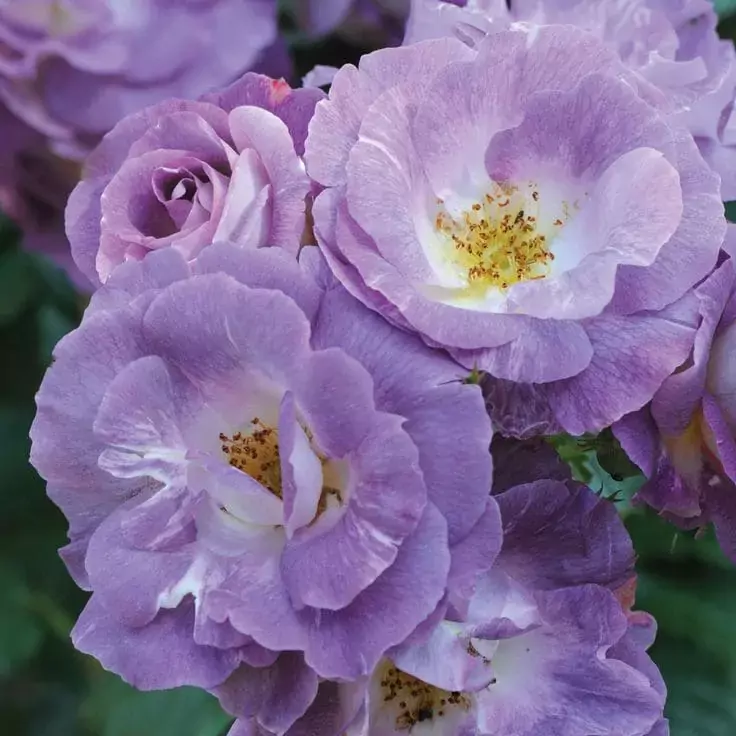
7. Melina® (Starlet®-Rose Melina®):
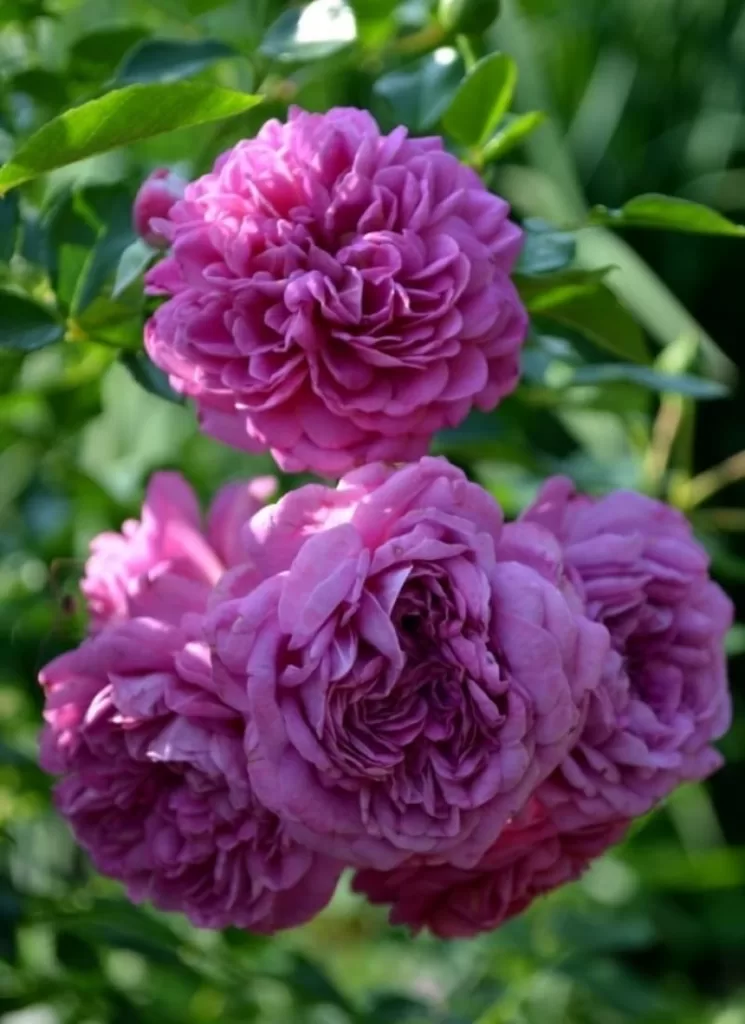
Melina® (Starlet®-Rose Melina®) Rosen Tantau Germany, 2013 Miniclimber. This rose is a typical representative of the “Starlet” series. The bush is very dense, produces many stems, and blooms continuously throughout the summer. The foliage is light green and exceptionally resistant to fungal infections. In the “Starlet” series, this is the most resilient and healthy rose.
Characteristics:
The flowers have a diameter of 5-6 cm, are densely double, arranged in clusters of 3-6, initially violet, then light blue, and they remain strong and vibrant for a very long time. The fragrance is strong, fruity, and sweet. Recommended for terraces, balconies, containers, and hedges. An exceptional rose variety from the ‘Starlet’ series in every way. The bush is very dense, with bright green foliage highly resistant to powdery mildew and black spot diseases.
It blooms continuously throughout the summer, producing beautiful, highly fragrant, densely double flowers in violet at the beginning of the flowering period, then turning light blue. The flowers are borne in medium-sized clusters of 3-6. The flowering period is exceptionally long, currently the longest among all varieties in the ‘Starlet’ series. Color: Violet, Light Blue Number of flowers per stem: 3-5 Fragrance: Weak Flower size: 5-6 cm Height: 150-200 cm USDA: Zone 6
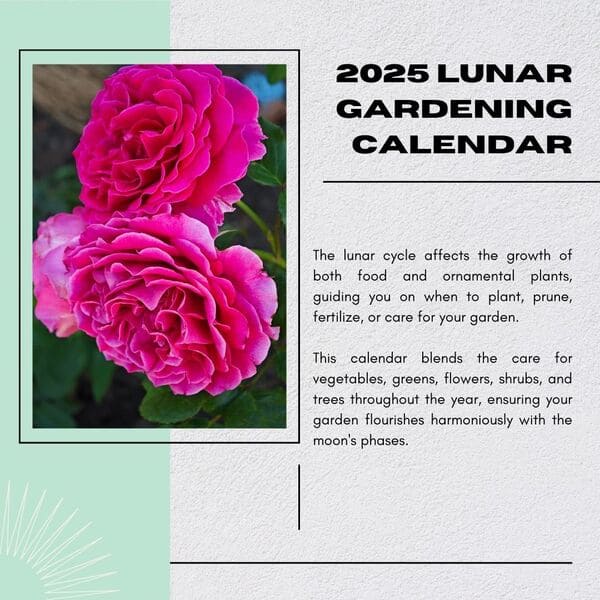
Get Your Free Lunar Gardener’s Calendar 2025!
Join the Lunar Gardening Revolution! Subscribe now to receive our exclusive Free Lunar Gardener’s Calendar for 2025. Harness the power of the moon to optimize your planting, nurturing, and harvesting.
8. Chateau Myrtille:
Chateau Myrtille, another masterpiece from Japanese breeders. Its Japanese name comes from the French, which translates to “Blueberry Castle.” In reality, the rose’s color resembles blueberry yogurt. The abundant blooms of this rose are ash-blue in color, and their nostalgic shape won’t leave anyone indifferent. As the petals age, they curl in a unique way, creating the outline of a sea star. This rose has a subtle, intriguing fragrance and is resistant to common diseases. Color: Ash-Blue, Milky Blueberry Number of flowers per stem: 1 Fragrance: Weak Flower size: 8-10 cm Average number of petals: 45 Height: 70 cm Width: 50-60 cm
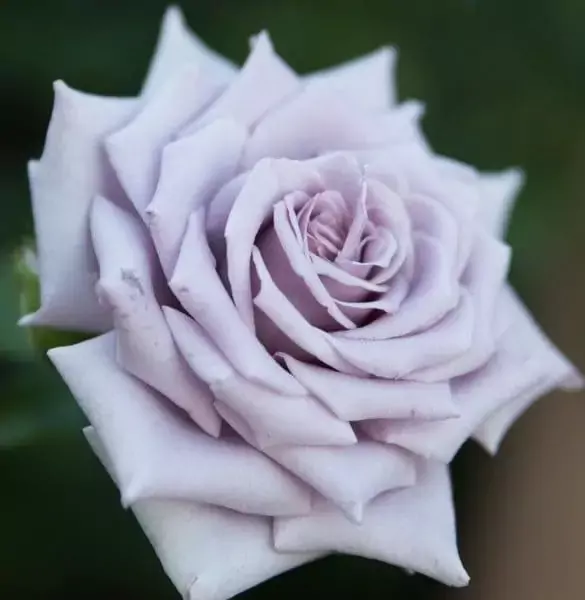
9. Terra Limburgia (ORYlila, Oryblue):
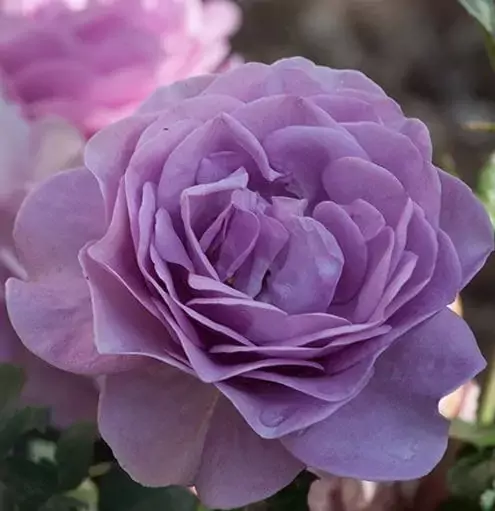
Terra Limburgia (ORYlila, Oryblue) – A Floribunda rose with large, double flowers in a pinkish-blue shade. It has a medium fragrance. The compact bush features matte, dark green foliage. It may be susceptible to powdery mildew.
Color: Blue Number of flowers per stem: 3-5 Fragrance: Medium Flower size: 8 cm Average number of petals: 30 Height: 70-80 cm Width: 40-60 cm This rose is named in honor of the 10th anniversary of Dutch radio L1 in Limburg. Breeder: Jozef Orye, Belgium, 2004.
10. Afrika Star:
Afrika Star, bred by Mrs. Olga West in Zimbabwe in 1965, is a captivating rose with light lilac-blue blooms. These fragrant flowers have an average petal count of 40 and grow on sturdy stems. This rose stands at a height of 120 cm with a width of 60 cm. It’s known for its resistance to powdery mildew and black spot, making it a robust choice for gardens in zones 6 to 9.
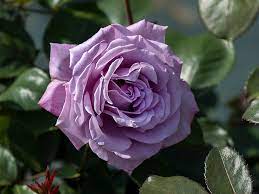
While true blue roses remain elusive, these varieties represent significant achievements in introducing blue shades into the world of roses. Advances in hybridization and breeding continue to inch closer to the dream of a truly blue rose.
